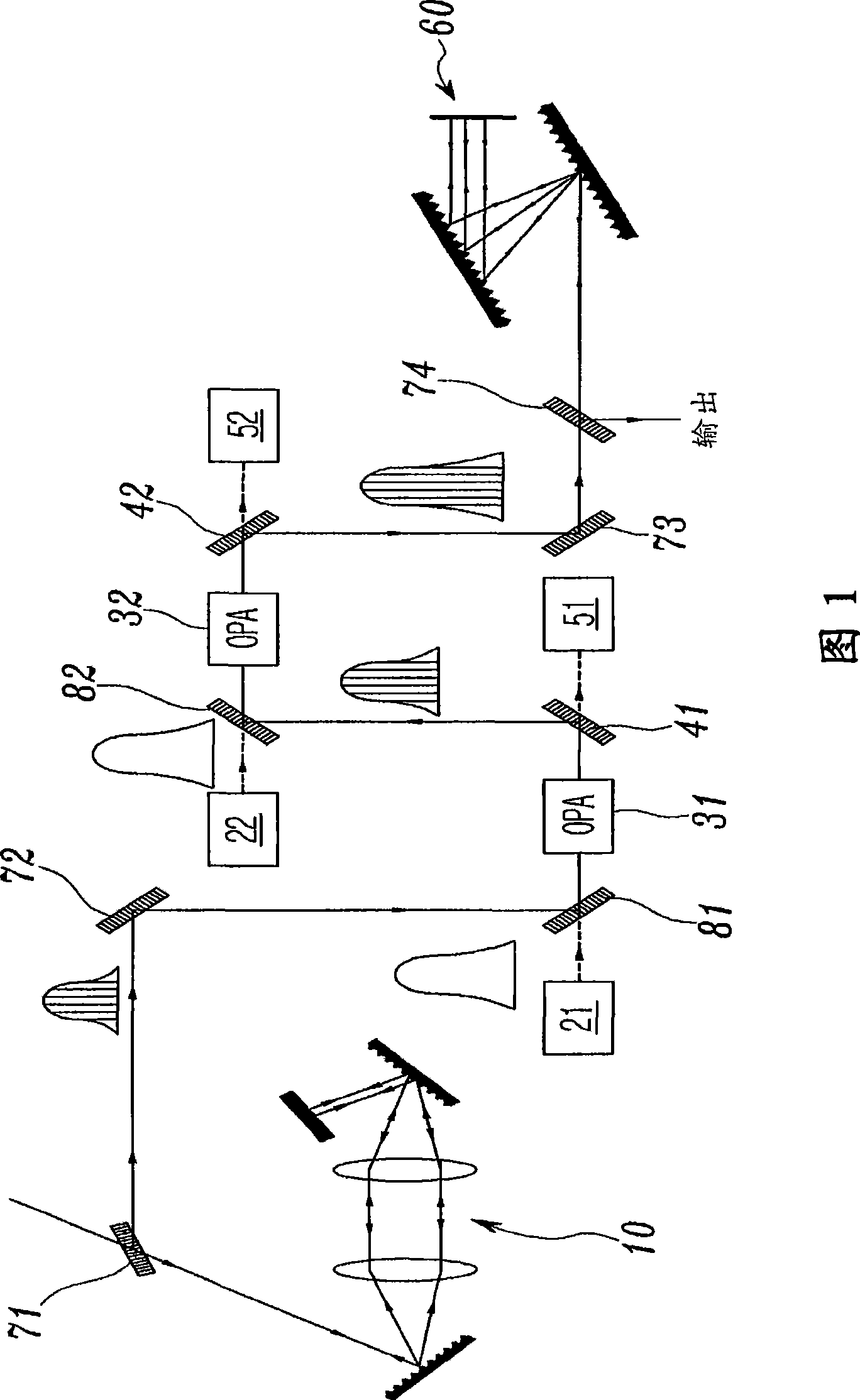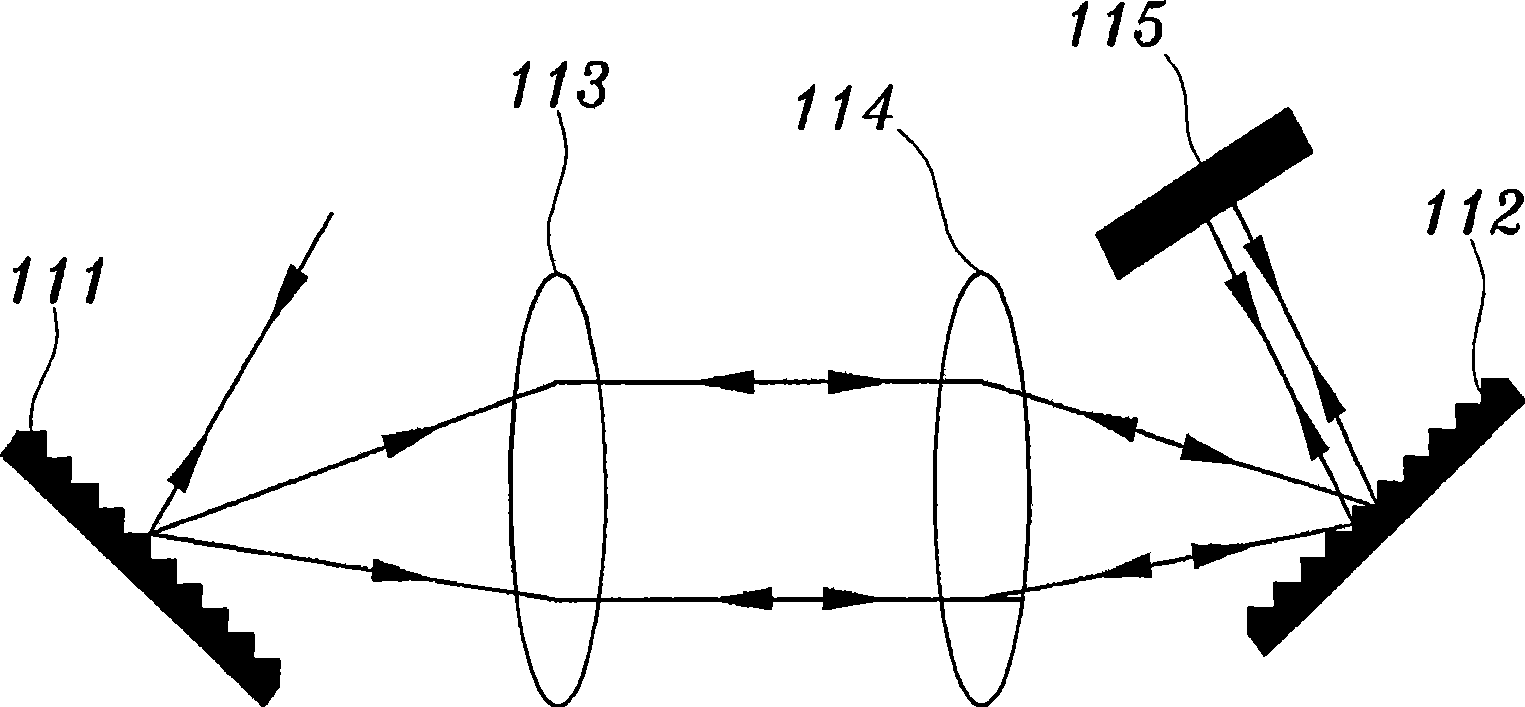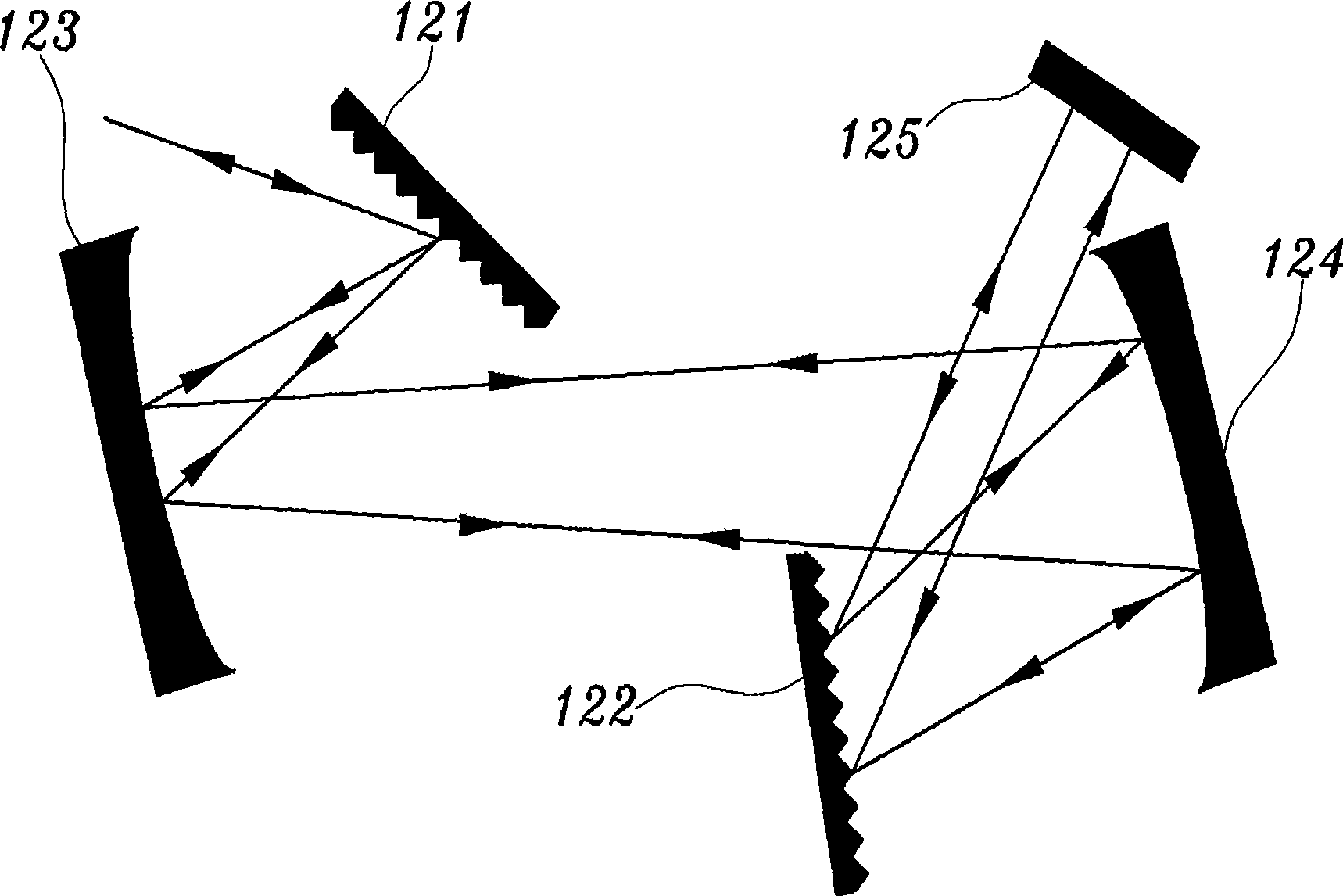Apparatus for optical parametric chirped pulse amplification (opcpa) using inverse chirping and idler
A technology for optical parametric amplification and idler signals, applied in optics, lasers, nonlinear optics, etc., can solve problems such as complex structures, increased construction costs, and difficult adjustment of optical systems
- Summary
- Abstract
- Description
- Claims
- Application Information
AI Technical Summary
Problems solved by technology
Method used
Image
Examples
Embodiment Construction
[0087] Hereinafter, embodiments of the present invention will be described in detail with reference to the accompanying drawings.
[0088] FIG. 5 is a block diagram of an optical parametric chirped pulse amplification (OPCPA) device according to the present invention, and FIG. 6 is a detailed schematic diagram showing the structure of the OPCPA device of FIG. 5 .
[0089] Referring to Fig. 5 and Fig. 6, the OPCPA device according to the present invention comprises: optical pulse stretcher 100, pump laser 210 and 220, optical parametric amplification (OPA) unit 310 and 320, optical signal separation unit 410 and 420, beam collection Units (beam dumps) 510 and 520 , and an optical pulse compressor 600 .
[0090] The optical pulse stretcher 100 is a device for temporarily stretching the laser light by changing the optical path for each frequency of the laser light, employing a short-wavelength-first type chirp (refer to Figure 9 ). That is, the optical pulse stretcher 100 temp...
PUM
 Login to View More
Login to View More Abstract
Description
Claims
Application Information
 Login to View More
Login to View More - R&D
- Intellectual Property
- Life Sciences
- Materials
- Tech Scout
- Unparalleled Data Quality
- Higher Quality Content
- 60% Fewer Hallucinations
Browse by: Latest US Patents, China's latest patents, Technical Efficacy Thesaurus, Application Domain, Technology Topic, Popular Technical Reports.
© 2025 PatSnap. All rights reserved.Legal|Privacy policy|Modern Slavery Act Transparency Statement|Sitemap|About US| Contact US: help@patsnap.com



